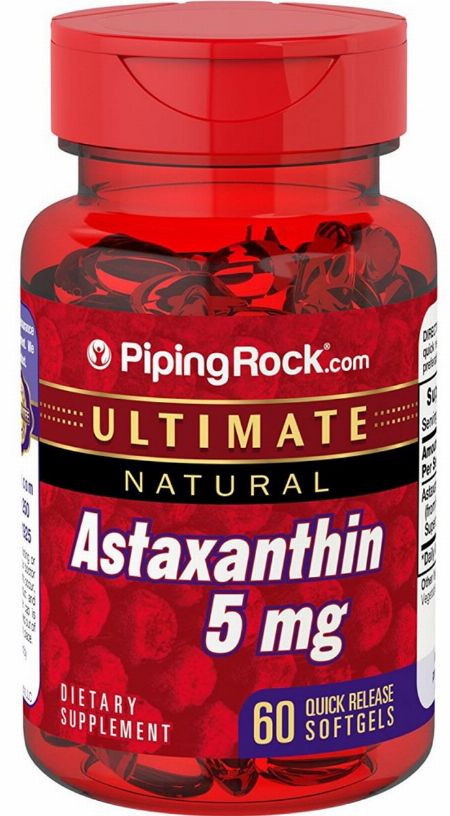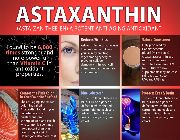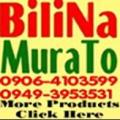1,200
ASTAXANTHIN. 5MG. 60 SOFTGELS ASTAXANTHIN
09493953531 & 09064103599 09064103599 Mon-Fri 9am-6pm
Metro Manila
ASTAXANTHIN. 5mg. Bilinamurato Piping Rock Softgels Astaxanthin
1. Please provide your name
2. Please provide your number
3. Please provide your inquiry
Start Chatting in 3 easy steps
No registration required.
No registration required.
365570 ads
We are one of the largest free online selling communities with thousands of active sellers.
306521376 views
Do you have something to sell? Your next sale might be just a few clicks away.
4.7 stars
Based from 898 member feedbacks. We value your suggestions and use it.



ASTAXANTHIN. 5mg. 60 softgels Astaxanthin
FREE meet-up at Robinsons Galleria, Ortigas Center, EDSA We deliver anywhere in the Philippines for a minimal charge. Contact: 0949-395-3531 or 0906-410-3599 For more products and more info, please visit our Facebook page, Bilina Murato ---------------------
• Astaxanthin is one of the most potent Antioxidants • It helps fight free radicals that damage cells
• It may also maximize the use of Carotenoids and vitamins A & E
Supplement Facts
Serving Size: 1 Softgel
Servings Per Container: 60
Amount Per Serving % Daily Value(DV)
Astaxanthin(from Haematococcus pluvialis) Supercritical CO2 Extract Process
5 mg *
Other Ingredients: Safflower Oil, Gelatin, Vegetable Glycerin.
Directions: For adults, take one (1) quick release softgel two times daily, preferably with meals.
WARNING: If you are pregnant, nursing or taking any medications, consult your doctor before use. Discontinue use and consult your doctor if any adverse reactions occur. Keep out of reach of children. Store in a cool, dry place. Do not use if seal under cap is broken or missing.
* Daily Value (DV) not established.
--------------
HEALTH BENEFITS OF ASTAXANTHIN By Dr. Michael Murray Introduction There are over 400 different members of the carotene family of pigments in nature. Historically, the potency of a carotene in improving human health was based on its ability to be converted to vitamin A. For example, beta-carotene, the pigment that makes carrots orange has the highest vitamin A value and was long thought of as being the most important carotene. However, it is now known that some of the most important carotenes to human health are not converted to vitamin A at all. The crowned “king†of all of the non-vitamin A carotenes is astaxanthin. It is given this title because of its unique benefits and actions in promoting health and protecting against cellular damage, especially in the brain and vascular system. Where is Astaxanthin Found in Nature? Astaxanthin is a vibrantly deep red carotene pigment found predominantly in marine life. A form of microalgae known as Haematococcus pluvialis is the richest source. When it is consumed by salmon, lobster, shrimp, krill, and other sea life the intense red pigmentation results in these animals having red or pink flesh, or outer shells. Astaxanthin is absolutely essential to the survival of these organisms. For example, astaxanthin is required by microalgae to protect itself from damage produced during photosynthesis. It is also known that young salmon die or do not develop properly without sufficient intake of astaxanthin in their diet. The astaxanthin also provides some protection for some animals by making them less visible in deep water, where the red segment of the wavelength spectrum of visible light does not penetrate. The red pigment also plays a role in mating and spawning behavior. How is Astaxanthin Produced? Although astaxanthin is found in salmon, herring roe, or krill oil supplements, the amounts in these sources are much lower than those provided from extracts of H. pluvialis. For example, the level of astaxanthin naturally occurring in a capsule of fish or krill oil is in the range of 100 mcg (0.1 mg). That amount is not much compared to the 4 to 12 mg per capsule found in most astaxanthin supplements derived from H. pluvialis. To produce natural astaxanthin, the best products use large indoor tanks to grow H. pluvialisunder ideal conditions that enhance astaxanthin production and prevent environmental contamination. The astaxanthin is then released from the thick cell wall of the algae and concentrated. There are other sources of astaxanthin on the market, but these forms are produced from either chemical synthesis or produced from genetically modified yeast (Phaffia rhodozyma). These synthetic forms are often fed to salmon in fish farms to give them red flesh, but this form of astaxanthin is not quite the same as natural astaxanthin as it has been shown to be more then twenty times weaker as an antioxidant than the natural form. How does Astaxanthin Work? It is a bit cliché to refer to various natural compounds as antioxidants. Yes, astaxanthin has antioxidant activity and definitely help prevents the oxidative damage that contributes to conditions such as aging, insulin resistance, cardiovascular disease, and neurodegenerative conditions such as Alzheimer’s disease. And, yes so do many other natural antioxidants. But, astaxanthin is a bit different as an antioxidant and exerts some additional benefits to protect cells. First, in regards to general antioxidant effects in protecting cell membranes, astaxanthin is more than 65 times stronger than vitamin C, 50 times more powerful than beta-carotene, and 10 times more powerful than vitamin E. Second, one of the unique aspects of astaxanthin relates to its size and how it fits into cell membranes. It is considerably larger/longer than other popular carotenes. Its size and physical form allows it to be incorporated into cell membranes where it is able to span the entire thickness of the cell membrane. This allows astaxanthin to not only protect the inner and outer cell membrane from oxidative damage, but also to stabilize the cell membranes. Astaxanthin also exerts some specific anti-inflammatory effects that make it quite useful in protecting brain and vascular cells from damage. Since astaxanthin effectively protects the membrane system of mitochondria (the energy compartment of cells), it can help boost cellular energy production. What Can Astaxanthin Do? Over 50 clinical and experimental studies have shown astaxanthin to be potentially helpful in the following conditions: • Cardiovascular Health. Protects vascular lining, promotes improved blood flow, and protects LDL cholesterol from becoming oxidized (damaged). • Eye Health. Protects against eye fatigue, helps improve visual acuity and depth perception, and increases blood flow to eye tissues. • Brain Health. Helps protect against aging and helps improve mental function. • Sports Related Activities. Promotes muscle endurance and protects against muscle damage. • Diabetes, insulin-resistance, and the metabolic syndrome. Helps improve antioxidant status and protect against vascular damage. • Skin Health. Reduces fine lines and wrinkles, improves skin elasticity, protects against sun damage, and prevents age spots and hyperpigmentation. • Immune health. Protects against damage to immune cells. One of the real special attributes of astaxanthin is its ability to cross the blood-brain and blood-retinal barrier to protect both the brain and eyes. This effect is quite unusual for carotenes. For example, popular carotenes like beta-carotene and lycopene do not cross either barrier. This effect of astaxanthin indicates that it may be particularly helpful in improving brain and eye health as well as protecting the brain against Alzheimer’s disease, macular degeneration, and other degenerative brain and eye disorders. Of course, it has other benefits as well, but my feelings are that this ability to cross into the brain and retina are what makes it really special. Another interesting effect of astaxanthin is on red blood cells. Because red blood cells (RBCs) are more susceptible to being damaged by oxidative attack as we age, this can lead to impaired delivery of oxygen to our tissues. Astaxanthin’s effects on cell membranes may be especially important in RBCs. In a 2011 double-blind clinical trial, 32 healthy subjects, ages 50-69 years (n=30), were assigned to receive astaxanthin (at 6 mg/day or 12 mg/day) or a placebo for 12 weeks. Both dosage levels of astaxanthin reduced oxidative damage to RBCs with no greater effect seen with the higher dosage level. The significance of this improvement may be profound especially when combined with another 2011 that found astaxanthin (6 mg per day for a 10-day period) was able to significantly improve blood flow (rheology). The reasons these effects are profound is that improving the delivery of oxygen throughout the body may produce a myriad of positive effects. What is the Dosage of Astaxanthin? The dosage range for astaxanthin is 4 to 12 mg daily. What are the Side Effects and Drug Interactions of Astaxanthin? There are no known side effects or drug interactions at recommended dosage levels. Key References: Ambati RR, Phang SM, Ravi S, Aswathanarayana RG. Astaxanthin: sources, extraction, stability, biological activities and its commercial applications–a review. Mar Drugs. 2014 Jan 7;12(1):128-52. Fassett RG, Coombes JS. Astaxanthin in cardiovascular health and disease. Molecules. 2012 Feb 20;17(2):2030-48 Kidd P. Astaxanthin, cell membrane nutrient with diverse clinical benefits and anti-aging potential. Altern Med Rev. 2011 Dec;16(4):355-64
---------------
.
This seller has been a member since: Apr. 18, 2015
Member Location:
Total Classifieds: 968
Why seller feedback is important?
Transact with most credible & reputable sellers
Know the seller you are going to deal with
Claim warranty long after purchasing the item
Warn you and other buyers against scams
Motivates sellers to provide good service